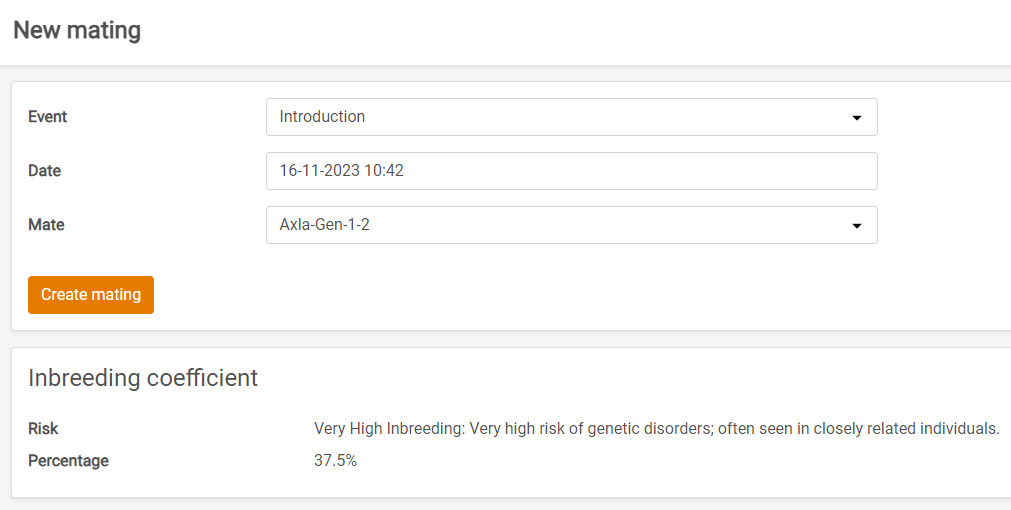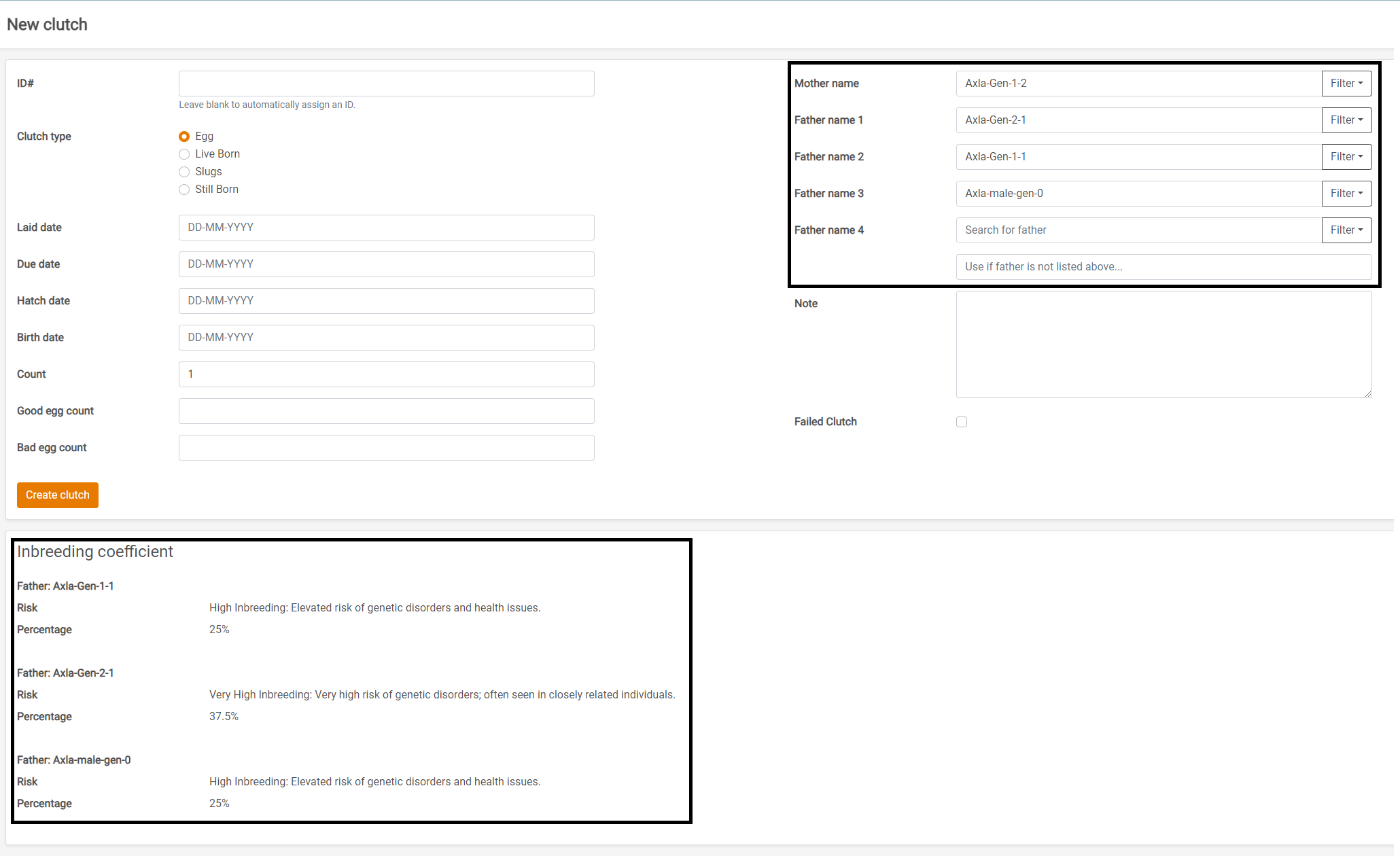Frequently asked questions
Creating many reptiles or activities can be a tedious task using the console. If you need to quickly add a lot of reptiles or activities, you could use the batch creation tool found on the Import/export page.
The labels generated in Reptile Scan comes in following sizes:
- QR codes
- 55x20mm
- EXPO labels
- 55x36mm
Printing with label printer Recommended
If you print on a label printer, like Brother, Zebra, Oki ect.
You can use all different sizes of lables, you just need to set it up in your printer settings. But we can recommend following label sizes:
- QR codes
- 62x29mm
- EXPO labels
- 62x40mm
Printing with A4 printer
If you print on a regular A4 printer - you can use following standard A4 label sheets:
- QR codes
-
Size: 63,5x33,9mm
- EXPO labels
-
Size: 63,5x46,6mm
When breeding reptiles that may share common ancestors or have any relation in the pedigree, one might want to know the risks and the chances of inbreeding in their offspring.
One way to find out is by calculating the inbreeding coefficient of the offspring, and thus finding out how closely related the parents of the offspring are.
Calculation of inbreeding coefficient formula:
The formula for calculating the inbreeding coefficient is based on the work of Wright (1922) and Fisher (1949) in the field of population genetics.
The inbreeding coefficient formula is a measure to find out how closely related individuals in a pedigree are. The formula adds up the probabilities that the offspring will inherit genes from a common ancestor.

- Fx is the inbreeding coefficient of the offspring in question.
- ½ represents the probability that a parent passes on their gene to its offspring.
- n-1 is the number of contributions of genes from a common ancestor to the offspring minus 1.
- (1 + Fa) Is the inbreeding coefficient of the common ancestor 'a' generations back, typically the parents of an offspring's grandparents.
Inbreeding coefficient risk table:
The table shows what the risks are at a certain inbreeding coefficient, where the higher inbreeding coefficient means higher chance of inbreeding.
| Risk | Inbreeding % |
|---|---|
| No Inbreeding: No risk of genetic disorders due to inbreeding. | 0% |
| Very Low Inbreeding: Minimal risk; typical in unrelated individuals. | 1-2% |
| Low Inbreeding: Still relatively low risk; common in the general population. | 3-5% |
| Moderate Inbreeding: Slightly increased risk; common in some isolated communities. | 6-10% |
| High Inbreeding: Elevated risk of genetic disorders and health issues | 11-25% |
| Very High Inbreeding: Very high risk of genetic disorders; often seen in closely related individuals. | 26-50% |
| Extreme Inbreeding: Extremely high risk of severe genetic disorders and health problems. | >50% |
There are two ways one can calculate the inbreeding coefficient for an offspring when creating/editing a mating or a clutch.
Mating

When creating or editing an existing mating, after choosing a Mate, our algorithm will begin calculating the inbreeding coefficient of the current reptile and the chosen mate.
The calculated data and risk are then displayed in a box below.
Clutches

The same when creating or editing an existing clutch, right after a Mother and Father has been chosen, the algorithm will then begin calculating the inbreeding coefficient and display it below, only differences are when creating a clutch you both have to pick a mother and a father for the algorithm to work, and since several fathers can be chosen, a list of the different fathers inbreeding coefficient will be displayed below.
This is one of Wright's early works where he introduced the concept of inbreeding coefficients and their effects on populations. The formula for inbreeding is further developed in this paper.
You can delete your account in your account settings.
You must cancel any active subscription and leave any teams you are a member of before deleting your account.
